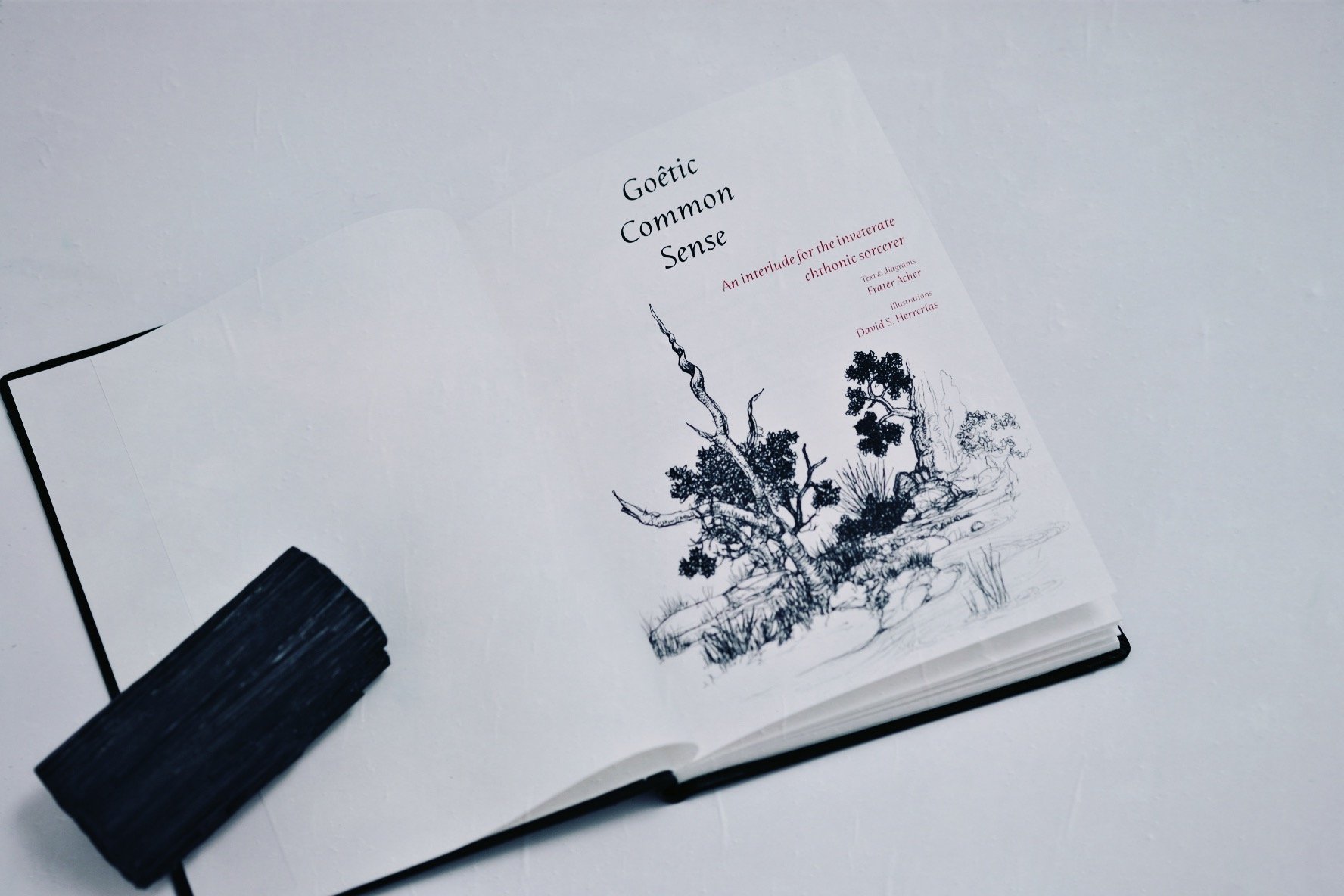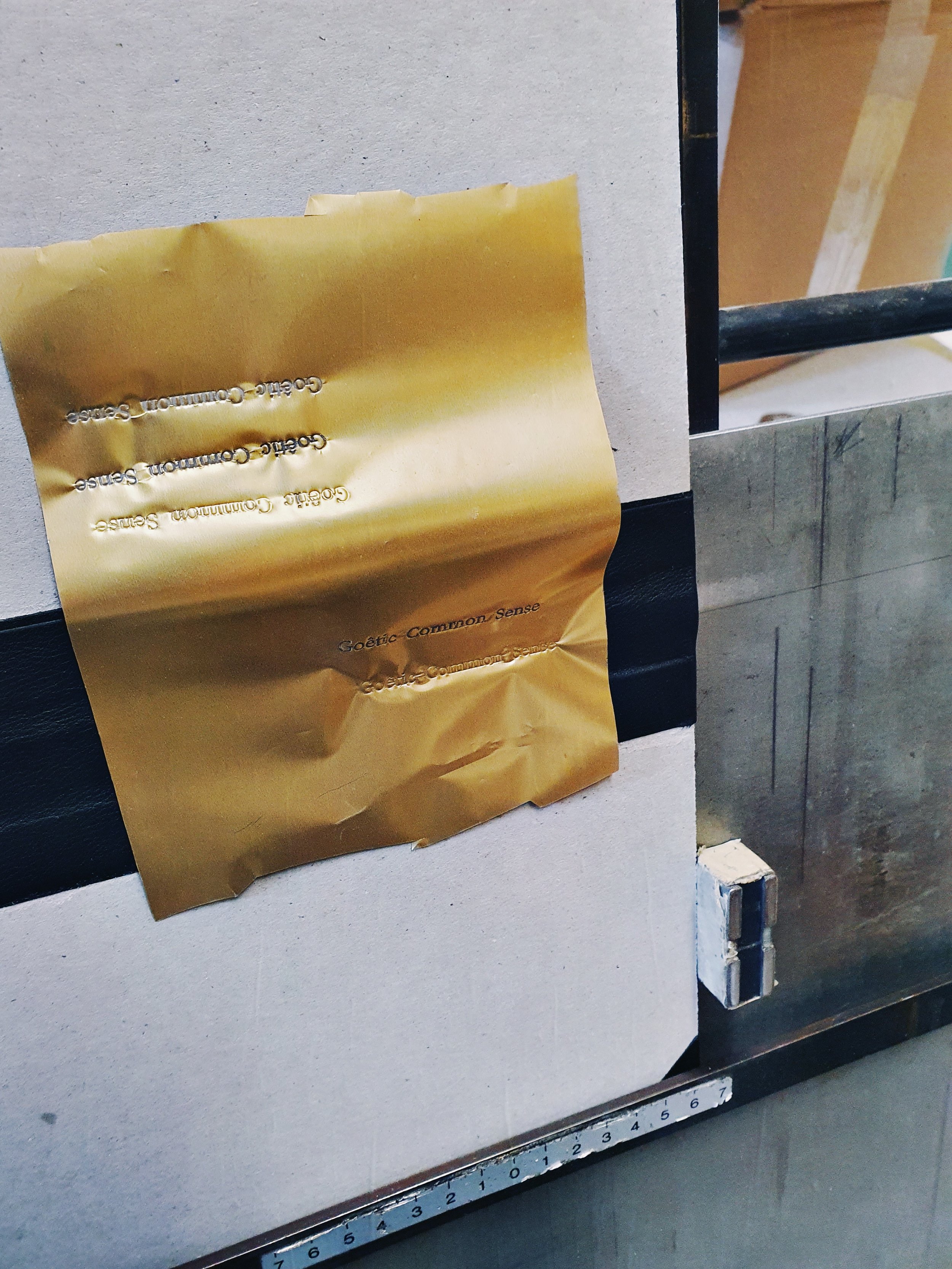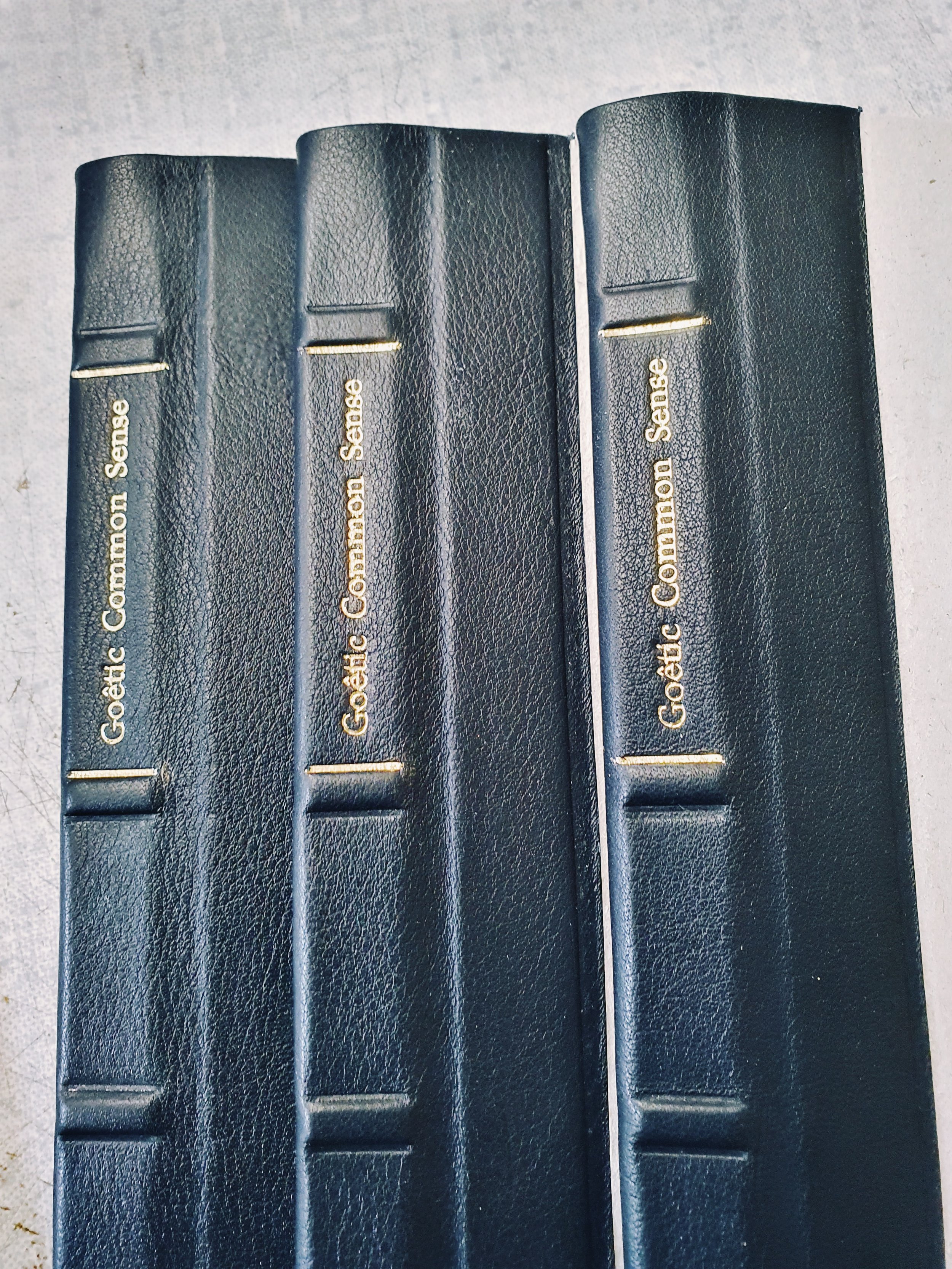Goêtic Common Sense – embodied
Here is how I think about a good book, as in, about the body of a written text.
Most spirits live happily without ever becoming embodied. Others take on an entirely different life once they incarnate. The latter is certainly true for the spirit of the written word: When a text steps over the threshold of becoming a physical object, it seeks its place in the material world. What has lived in our heads, on our screens, and in the ocean of information called internet, steps forward to materialise in its very own shape.
The measure of success in this delicate process, as always with incarnation, is twofold: To make the outer body of the text speak to its message and meaning, i.e. to create a relation between its visible and invisible spirit. And second, to turn the book into a natural object. That is, to push the art of the craft to such a degree, that its final product no longer bears the mark of the art-ificial, but seamlessly blends into the natural world.
As such, a good jug, a good knife, a good book can be placed beside a rock, a log or a leaf and they will sit well together. Man made objects of such quality require an enormous effort in the process of their creation, so that when they are finished they will effortlessly take their place in Nature.
Together with the wonderful folks at the Bookbindery Konrad we went an excursion to create a body for the essay I recently published: Goêtic Common Sense. Founded in 1838, and situated in the heart of old Munich, they are a small business of one apprentice, two journeymen and two bookbinding masters.
Above you can see images of where this journey ended. Below, you can find a longer series of photos they kindly took from the process of its creation.
The resulting book is simple in many ways: A small, black volume, firm and sturdy in its appearance, and plain enough to blend into the books on any shelf. When I turn it over in my hands, the journey of its creation has almost faded out of sight. All that I now see is a good book: Its components have rounded off into one, it has taken its place in the material world.
Of course, I can slow down and inspect it more closely, just how I would examine the grain running through a rock or leaf. In this case I’d be able to see the echoes of the following: Heavy thread-stitched 130 g/m2 paper, printed in two colours throughout, four raised bands on the spine, gold title embossing, a skin of black cowhide on spine and edges, and black iris cloth on the book covers.
This book was too expensive to market it broadly. It almost cost 200 USD per piece. All of these costs are an expression of the craft that went into its creation. Not only the time and care invested by the bookbindery master. When we invest into a book whose body turns out almost as if it was a natural object, we also pay for the pure fact that these skills still exists. That the art of turning the craft of book-creation invisible still exists.
Here is to all the books you might be commissioning with your local bindery. – And here is to the journey ahead, of getting Goêtic Common Sense out in a more affordable physical form, and into your hands later this year.
LVX,
Frater Acher
May the serpent bite its tail.




























































